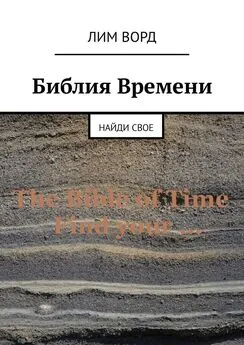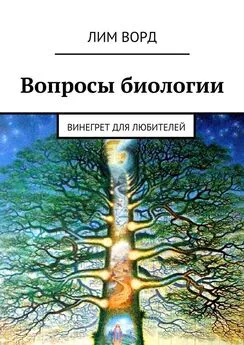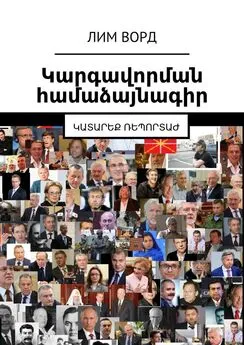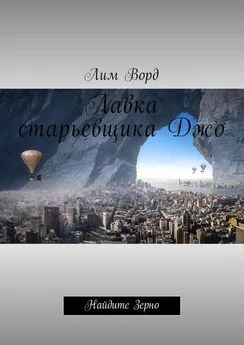Лим Ворд - Библия Времени. Найди свое
- Название:Библия Времени. Найди свое
- Автор:
- Жанр:
- Издательство:неизвестно
- Год:неизвестен
- ISBN:9785449318695
- Рейтинг:
- Избранное:Добавить в избранное
-
Отзывы:
-
Ваша оценка:
Лим Ворд - Библия Времени. Найди свое краткое содержание
Библия Времени. Найди свое - читать онлайн бесплатно ознакомительный отрывок
Интервал:
Закладка:
The priest, as a rule, is elected, from among the most respected parishioners. Apostolic succession (elevation to the rank through ordination, that is, consecration) is absent.
3. The synagogue (other Greek «meeting», or Hebrew, bate knes – «house of assembly», it is also «meadat meat» – «small sanctuary») – the place of public worship, the center of religious life (Jewish) community.
1) Entrance, a place for a washbasin (washing of hands). On the door frame is attached a case with a fragment from the Torah, mezuzah – before it the parishioner should be touched. This case can be recognized by the initial letter Ш, one of the names of God – «Shaddai». This (but not necessarily mandatory) rule extends to private Jewish dwellings. Married women enter the sanctuary, usually with something covered (wig, headscarf, etc.) head and. Women’s pants, calling clothes, neckline – are not welcome. Men are wearing a headdress in the synagogue (and, in general, outside it): it is a symbol of recognizing the power of God.
2), 3). Prayer rooms on the edges of the prayer hall. Sacred texts, relics, memorable photographs can be placed here. This interior helps to increase the useful area of the walls of the sanctuary, and also creates conditions for more confidential communication among parishioners, including discussions on earth affairs, etc. Men and women, usually only during prayer, gather separately. This custom does not work during a festive meal or a concert (once again, yes: the synagogue, in spite of its high sacral value, is not the Temple, but only the House of Assembly).
4) Bima or Almea. The elevation in the center of the synagogue, with a table where the chosen minister (rabbi, hazzan, or another worthy parishioner) reads the Torah and (usually the final public reading) excerpts from the book of the Prophets – Gaftary. Sometimes readers (called by parishioners) can replace each other. The main provisions of these texts: an indication of the Lord’s faithfulness to his promise, a request for the restoration of Zion, the coming of the Messiah and the confirmation of the throne of David, gratitude for the gift of the Torah, the Prophets and the Sabbath or the feast.
5) In some cases, the bima has a fenced passage to the synagogue ark (6), or merges with it. In this place are located lamps.
6) The Synagogue Ark, Hebrew. aron kodash. The symbolic reflection of the Ark of the Covenant, the cabinet in which the Torah scrolls are located. When you open the doors of the ark, those present, if they sit, stand up. The most important prayers are pronounced before the open (Celestial Gate) cabinet.
7) Above the ark is the Unquenchable lamp, ner-tamid, the symbol of the Menorah, the oil (golden, seven-barrel) lamp of the Temple. Neramid, ideally, should burn all night, just like the Menorah in the Temple, and (preferably) also a day. The Menorah itself symbolizes at the same time the unity and diversity of human nature. The branches of the lamp resemble a tree and, thus, symbolize (the root of the Heaven) the Tree of Life.
4. Mosque (Arabic «place of worship») – Muslim prayer (liturgical) structure. The first mosque is a cubic building in Mecca, Kaaba (Arabic «Cube»), or also «Beitou-Llah» – «House of God». During the annual hajj (pilgrimage), believers seven times bypass the sanctuary (ritual tawaf – «circumvention»), pronouncing prayers, asking for mercy and forgiveness.
Inside the Kaaba there are three columns; two lamps, a table, to put on it any objects, for example incense; The walls and floors are made of marble. The upper inner walls of the Kaaba are closed by a curtain on which the shahada is written. Shahada, the symbol of the faith of Muslims, reads word for word: «I testify that there is no other God besides Allah, and I also testify that Muhammad is the Messenger of Allah.»
The meaning of the last words is the rejection of other beliefs in the same spirit, from the multitude of other preachers who preach their teachings in pre-Islamic times, and so interfere with each other.
1) Pond for bathing before prayer (prayer).
2) The main prayer hall (for men). Ahead are the venerable elders, then to the entrance – middle-aged people and youth. The floors are carpeted. On the walls are excerpts from the Koran. Images of living beings are forbidden. Namaz includes waist and earthly obeisances (sitting on the knees), praising Allah («Allahu Akbar»), lifting palms to the sky, while the thumbs touch the earlobes, reading the suras of the Koran…
3) For women, a separate room is set up, or a balcony with an opaque curtain.
4) Minbar – tribune, the department with which the imam reads Friday’s sermon. The Imam – «the one who lies ahead, the one who leads the prayer» is also «an example for imitation» – a clergyman who manages the mosque, which produces common prayers and tribes.
Trebas are sacred actions and prayers, performed by a priest at the request (request, order) of individual parishioners.
Imam in prayer can be any worthy Muslim who knows the Koran well, regardless of his social status. In Turkey, the imams are elected by parishioners, and (secular) authorities claim. This service (usually without interruption from the conduct of any other activity, which gives daily bread) promotes the multilateral development of man. Imams are often teachers (mentors), interlocutors, writers, etc.
In Shiites, the imam (the supreme imam), who has the right to interpret the Koran and guide believers, can only be (blood) heirs of the cousin and son-in-law of the Prophet, Abu Talib. «Small Imams», ie, in the Sunni tradition, imams are appointed fuqaha (people who have a special theological education for service in the mosque). Hereditary right and appointment instead of elections are practiced, first of all, in Iraq, among Shiites, and also part of Saudi Arabia.
Mulla is a connoisseur of the Muslim ritual, the teacher of the madrasah and, also, the imam.
Muezzin («screaming in public») is an assistant to the Imam. Being on a high minaret, the muezzin calls on Muslims to perform compulsory prayer.
Kadi has the status above the imam of the mosque, and is the head of the Muslims of the city or region. In addition to worship, the kadi deals with litigation, family conflicts, the investigation of various kinds of crimes, and the punishment of the perpetrators. Kadi may be elected, or appointed, depending on the specifics of the state.
5. Mihrab. The niche in the wall of the mosque, indicating the direction to Mecca, giving the impression of an infinite deepening, serving as a focal point of the views of the parishioners. Usually the mihrab is richly decorated, well lit, has two columns and an arch. In the very hollow, he has the right to perform prayer, first of all, the imam.
6. Minaret (the Arab «manara»), a high narrow tower for the call of Muslims for prayer. Early minarets have a circular staircase from the outside, more modern ones – inside.
7. Park with ponds (fountains) for rest, a frequent addition to the mosque.
Confucianism in Chinese is called Pinyin, the «School of Educated People», and does not contain the name of the founder, philosopher and politician of Confucius, that is, Kun-Fu-tzu (the real name is «Teachers of the Kun clan» – Zhong-ni, 551—479 BC). Several secondary Pentateuch, written on fragments of memories that survived the most severe persecutions in the reign of Qin Shi Huangdi, scientists contains descriptions of the rites of veneration of ancestors, temples created in their honor, morals, the history of a fictional ideal country. In general, the idea of the One Creator (Great Sky), hell, paradise, immortality of the soul is present, but not explicitly expressed. Heaven is seen as a resonator, a source of moral senses, reacting to the behavior of people and sending them signs. In a sense, Confucianism coincides with the Chinese people’s religion (also Pinyin), numbering more than 500 million followers. After Heaven, an important component here is the Qi-like energy, as well as the reality of the souls of the ancestors (who, under certain conditions, can be heeded).
Hinduism, although it was recognized in many European countries and the United States, as an unusual course of psychotherapy, is still localized primarily in native India. There, in fact, this complex of philosophical ideas, ethical norms, traditions is called (in Sanskrit, the ancient language of the higher caste), Sanatana-Dharma («Eternal Law»). The sacred texts – the Vedas, the Upanishads, the epics of the Ramayana and the Mahabharata, like the set of books of the Old Testament in many respects (albeit much less realistically) reflect the history of the formation of the universe, and of the native country. With some caution, as the supreme God of Hinduism, one can define the concept of Brahman (originally – «Prayer»), the soul of the world, the primordial nature of things and phenomena. He can be worshiped as any form that the individual imagines in his mind. Supporters of Vaishnavism serve the Absolute in the guise (avatar) of the Vishnu-Keeper of the Universe, and also whether it is more understandable, humanlike and active reflections – Krishna and Rama. Shivaites worship Shiva, the essence of the static male origin of the universe, the creator of rebirth, sometimes destructive. The general meaning of service, observance of accepted norms – merging with the Absolute, while preserving, however, and some of its individual beginning, the improvement of personal status, including material, with each subsequent rebirth. Brahma (Brahma) – the god of creation, you can say, is the first among equals, together with Shiva and Vishnu is Trimurti (triad), in fact, the spiritual beginning of the All – Brahman.
Buddhism also claims to be a world religion, a very controversial, but all the more worrying, mind of the continuation of Hinduism. The founder is the Buddha Shakyamuni, ie, in Sanskrit, the «Awakened Sage» (623 – 543 BC). Actually, the buddhas before Shakyamuni, according to sources, there are several, but he is the most famous. The future awakened Teacher of mankind, under the guidance of which people will lead exclusively a holy life – Maitreya (Skt. «Loving», «Benevolent»). The main idea is non-resistance to evil by violence, passive resistance to adversity, acceptance of the world as it is. Because of this behavior, the higher rational being (that is, the Buddhist monk, who received the higher enlightenment in the cycle of his rebirths) must leave the system of the world, more precisely, the captivity of his consciousness, which created such a mosaic image of him. No gods, One Mind, Paradise, Hell, as a natural area of attraction of a religious ascetic, Buddhism does not presuppose (although it does not deny their very existence). The only goal is the «fading of the candle» of consciousness, nirvana in spirit, and not the body (paranirvana), total and final death.
Shamanism, although not a recognized world religion, was once distributed throughout the Earth. Now it is localized in some tribes of South, North America, Africa, Southeast Asia, Siberia and the Far East. The origin of the term, perhaps, from the Sanskrit scraman (śramaṇa) is a wandering hermit, an ascetic ascetic. The second version is the Tungusic-Manchurian Sam-man, that is, the «lover of knowledge». The shaman introduces himself into trance by tambourine strikes, dances, special singing, and lays for a long time, not reacting to external influences. In an anxious dream, traveling on the branches or roots of the archetypal World Tree, he visits the middle, higher, or lower worlds. Higher – are inhabited by enlightened good essences, the lowest – by evil creatures. Schemes of other worlds are very individual, therefore can not be reduced to a common, acceptable for the creation of a classical religion, a picture.
Читать дальшеИнтервал:
Закладка:










